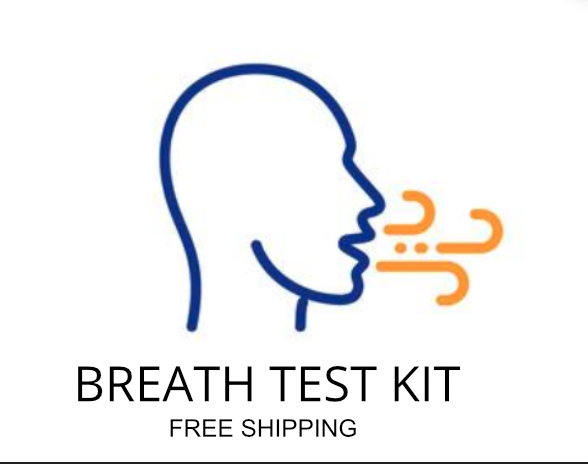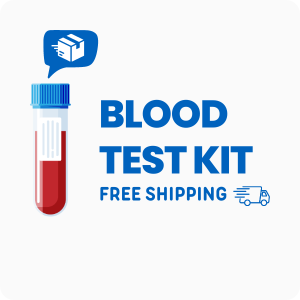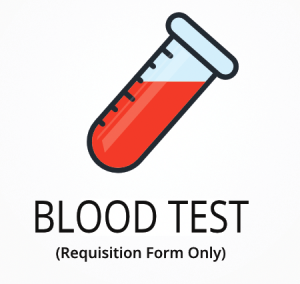Ordering the Small Intestine Bacterial Overgrowth (SIBO) Breath Test | 3-Hours | Lactulose | New York
Testing for bacterial overgrowth in the small intestine can help pinpoint the cause of symptoms like bloating, gas, diarrhea, constipation, and stomach pain. This test measures both hydrogen and methane levels in your breath after drinking lactulose, which can help identify where bacteria may be growing in your digestive tract. Interestingly, research shows that SIBO is sometimes linked to conditions like anemia, osteoporosis, and even chronic fatigue syndrome, making this test useful for more than just digestive complaints.
Ordering this test provides several specific benefits:
- Detects both hydrogen and methane gas for a more complete picture of gut bacteria activity
- Helps identify the location of bacterial overgrowth in the small intestine
- Supports diagnosis of carbohydrate intolerance and related digestive issues
- Can reveal links to autoimmune conditions and nutrient absorption problems
- Offers a non-invasive, at-home collection process for convenience
Who Should Consider Breath and Digestive Gas Testing
People who experience ongoing bloating, gas, or unpredictable bowel habits may find this test helpful. For example, someone who feels tired after eating certain foods and struggles with stomach cramps might discover that bacterial overgrowth is affecting their digestion and energy.
Ordering this test may also be helpful in these situations:
- Frequent belching or flatulence that does not improve with dietary changes
- Unexplained fatigue that seems to follow meals
- Recurring stomach cramps or discomfort after eating fiber-rich foods
- Food intolerances that have not been explained by other tests
- Someone with osteoporosis who also has digestive complaints, since gut bacteria can affect nutrient absorption
Testing for bacterial overgrowth can help identify the root cause of symptoms like gas, bloating, and irregular bowel movements, allowing for targeted treatment and improved nutrient absorption. Delaying this test may allow symptoms to persist or worsen, making it harder to address underlying digestive issues.
Preparing for Digestive Gas and Bacterial Overgrowth Testing
Fasting is required for at least 12 hours before collecting your breath samples for this test. Always follow the specific instructions provided by your doctor or healthcare practitioner to ensure your sample is collected correctly and your results are as useful as possible.
Labs Included When Ordering Your Small Intestine Bacterial Overgrowth (SIBO) Breath Test
| Test Name | Reference Range | Significance | Low and High Levels of Small Intestine Bacterial Overgrowth (SIBO) Breath Test |
|---|---|---|---|
| Hydrogen (Breath) | 0-20 ppm (baseline); <20 ppm rise after lactulose | Hydrogen in the breath is produced when bacteria in the small intestine ferment carbohydrates. A significant rise after lactulose suggests bacterial overgrowth in the small intestine. | High levels mean there is likely an overgrowth of bacteria fermenting carbohydrates in the small intestine.
Low levels mean there is little to no bacterial fermentation, or the bacteria present do not produce hydrogen. |
| Methane (Breath) | 0-10 ppm (baseline); <10 ppm rise after lactulose | Methane is produced by specific gut bacteria called methanogens. Elevated methane after lactulose can indicate a type of bacterial overgrowth often linked to constipation. | High levels mean methanogen bacteria are present in excess, which can slow gut movement and cause constipation.
Low levels mean there are few or no methanogen bacteria, or they are not active in the small intestine. |
Reference ranges may vary slightly based on periodic updates from the laboratory.
Small Intestine Bacterial Overgrowth (SIBO) Breath Test FAQ
Is there Small Intestine Bacterial Overgrowth (SIBO) Breath Test testing near me?
This is a home test kit, so you can collect your breath samples locally and send them to the lab; check the draw location link at the top of the page for more details. For those dealing with unpredictable digestive symptoms, having a convenient collection option can make it easier to get tested without added stress.
How do I interpret the test results?
While your treating physician should always review your results, we also offer a one-on-one test results review with our clinical team to help you understand your report.
What is the cost of the test?
The price listed for this test includes standard shipping to you and return shipping to the lab, though draw fees may apply. Ordering this test can help you address digestive symptoms sooner, which may lead to faster relief and more targeted treatment.
How often should I retest?
Retesting is usually recommended 2-3 months after starting treatment or making changes to your diet, especially if symptoms return or do not improve. Regular follow-up testing can help track progress and guide any needed adjustments to your care plan.
How accurate is the test?
This test uses a timed breath collection method after lactulose ingestion, measuring both hydrogen and methane gases for precise detection of bacterial overgrowth. The test has a specificity of 86% and a sensitivity of 78%. TrueHealthLabs.com partners with CLIA-certified and CAP-certified laboratories to uphold rigorous testing standards for dependable results.
Important Notes
- Do not order this test if you are allergic to lactulose or are diabetic.
Medical Review Board
Reviewed by Jeff Donohue M.D. from Body Logic and Brady Hurst DC, CCCN. Written by True Health Lab’s team of editorial health contributors.
Disclaimer: This information is for educational purposes only and not intended as medical advice. Consult your healthcare provider for personalized guidance.
Why Customers Trust True Health Labs – What People are saying
Also rated 4.6 out of 5 based on 3452 ShopperApproved reviews- See all TrueHealthLabs.com reviews.








